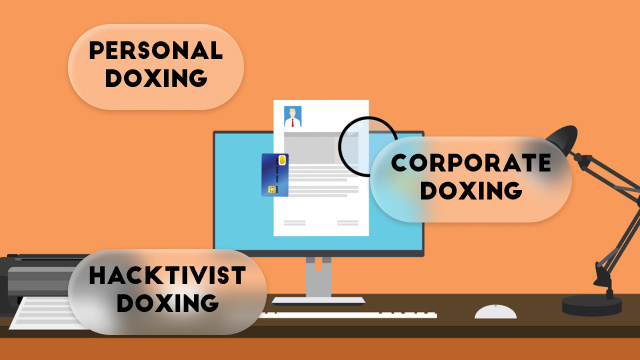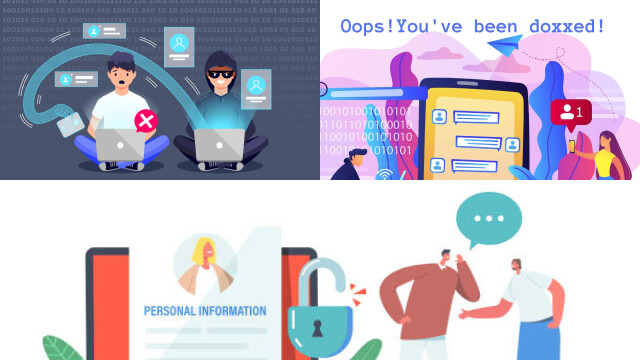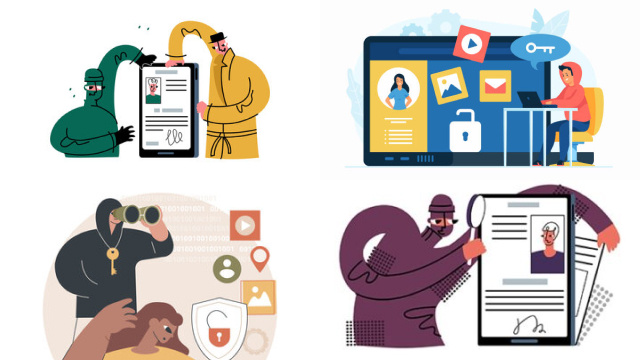What It Is and How It Works
Doxing, short for “document tracing,” is the practice of using publicly available information to identify and gather personal information about an individual or organization. This information can include their full name, address, phone number, email address, and even sensitive details such as their social security number or financial records.
Doxing is often carried out by individuals or groups seeking to harass, intimidate, or blackmail their targets, or to expose their personal information to the public. In some cases, doxing can lead to physical harm or identity theft.
The process of doxing typically involves extensive online research, including social media accounts, public records, and other online sources. Hackers may also use specialized tools and techniques to gain access to private information.
As a form of cyber harassment, doxing is illegal in many jurisdictions and can have serious legal consequences. It is important to be mindful of the personal information we share online and take steps to protect our privacy and security.
Forms of Doxing: Personal Doxing, Hacktivist Doxing, and Corporate Doxing
Doxing can take on various forms depending on the intent of the perpetrator. The three most common forms of doxing are personal doxing, hacktivist doxing, and corporate doxing.
Personal doxing is the most well-known form of doxing and involves the gathering and sharing of personal information about an individual. This type of doxing is often carried out by individuals seeking to harm or harass their target.
Hacktivist doxing, on the other hand, is a form of doxing carried out by hackers or hacktivist groups for political or social reasons. This type of doxing is usually aimed at exposing sensitive information about governments, organizations, or individuals who are seen as violating human rights or engaging in unethical practices.
Finally, corporate doxing is the practice of exposing sensitive information about companies or organizations for financial gain or to expose unethical practices. This type of doxing is usually carried out by insiders or outsiders who have access to the company’s sensitive information.
Regardless of the form, doxing is a serious invasion of privacy that can have severe consequences for the victim. It is important to take measures to protect personal information and to report any instances of doxing to the appropriate authorities.
Motivations for Doxing: Revenge, Intimidation, and Activism
The motivations for doxing can vary depending on the individual or group carrying it out. Three common motivations are revenge, intimidation, and activism.
Revenge is often a driving factor behind personal doxing. Individuals may seek to expose personal information about someone who has wronged them in some way, either to embarrass or harm them.
Intimidation is another motivation behind doxing, especially in cases of hacktivist or political doxing. In these instances, individuals or groups may seek to intimidate their targets or dissuade them from continuing certain actions or beliefs.
Activism is also a driving force behind doxing in some cases. In these instances, doxing may be used as a means of exposing information about individuals or organizations that are seen as engaging in unethical or harmful practices. This type of doxing is often carried out by hacktivist groups or activists seeking to bring attention to a cause.
Regardless of the motivation, doxing is a serious violation of privacy and can have severe consequences for the victim. It is important to be aware of the potential risks associated with sharing personal information online and to take steps to protect oneself from doxing attacks.
Tools and Techniques Used for Doxing: Social Engineering, Open Source Intelligence, and Cyberstalking
Doxing involves the use of various tools and techniques to gather personal information about an individual or organization. Some of the most commonly used tools and techniques include social engineering, open source intelligence, and cyberstalking.
Social engineering is the art of manipulating people into divulging sensitive information. This can involve phishing emails or phone calls that trick the victim into revealing personal details.
Open source intelligence (OSINT) involves using publicly available information to gather data about a person or organization. This can include information from social media profiles, public records, and online forums.
Cyberstalking is another common technique used in doxing. This involves the use of online tools and resources to track and monitor an individual’s online activities.
Other tools and techniques used in doxing include data mining, brute-force attacks, and exploiting security vulnerabilities.
It is important to be aware of the potential risks associated with doxing and to take steps to protect personal information. This includes being cautious about the information shared online and taking measures to secure online accounts and profiles.
Risks and Impacts of Doxing: Privacy Violations, Reputation Damage, and Physical Threats
Doxing can have severe consequences for the victim, including privacy violations, reputation damage, and physical threats. The release of personal information can lead to a range of negative impacts, both online and offline.
Privacy violations are perhaps the most obvious risk of doxing. The exposure of personal information can lead to identity theft, financial fraud, and other forms of cybercrime.
Reputation damage is also a major risk of doxing. The release of sensitive or embarrassing information can harm an individual’s personal or professional reputation, leading to job loss or social isolation.
In some cases, doxing can also lead to physical threats or harm. Victims may be targeted by harassers or stalkers, or may be subjected to real-world attacks.
Overall, doxing is a serious violation of privacy and can have long-lasting impacts on the victim. It is important to take steps to protect personal information and to report any instances of doxing to the appropriate authorities.
Legal and Ethical Considerations of Doxing: Free Speech, Public Interest, and Personal Responsibility
Doxing raises several legal and ethical considerations related to free speech, public interest, and personal responsibility. While some may argue that doxing is a form of free speech, others believe it is a violation of privacy and a form of harassment.
From an ethical standpoint, the public interest must be taken into account. While the exposure of unethical or illegal behavior may be in the public interest, doxing that targets innocent individuals is unethical and can be damaging to their lives.
Personal responsibility is another consideration. Those who engage in doxing must be held accountable for their actions and the potential harm they may cause to their victims.
In terms of legal considerations, doxing can be considered a violation of privacy laws and can lead to civil or criminal penalties. However, the laws around doxing vary depending on the jurisdiction and the specific circumstances of the case.
Overall, it is important to consider both the legal and ethical implications of doxing and to approach the topic with care and consideration for the potential impacts on all parties involved.
Prevention and Mitigation of Doxing: Cybersecurity Practices, Digital Hygiene, and Legal Remedies
Firstly, individuals and organizations must take cybersecurity seriously, including securing online accounts and profiles with strong passwords, enabling two-factor authentication, and keeping software up to date to protect against vulnerabilities.
Digital hygiene also plays a critical role in prevention and mitigation of doxing. This includes being cautious about what personal information is shared online, limiting social media exposure, and using privacy settings to control who can access personal information.
Legal remedies may also be available for victims of doxing, including civil suits and criminal charges against those responsible. It is important for victims to document any instances of doxing and report them to the appropriate authorities.
Overall, prevention and mitigation of doxing requires a combination of vigilance, education, and legal action. By taking these steps, individuals and organizations can help protect themselves against the harmful impacts of doxing.
Conclusion: Protecting Yourself and Your Data from Doxing
In conclusion, doxing is a serious violation of privacy that can have long-lasting impacts on the victim. To protect yourself and your data from doxing, it is important to take a proactive approach to cybersecurity and digital hygiene.
This includes securing online accounts and profiles with strong passwords, limiting social media exposure, and being cautious about what personal information is shared online. It is also important to educate yourself on the risks and impacts of doxing, and to report any instances of doxing to the appropriate authorities.
By taking these steps, individuals and organizations can help protect themselves against the harmful impacts of doxing and ensure that their personal information remains secure. Remember, prevention is the best defense against doxing, and taking action to protect your data now can help prevent future harm.




